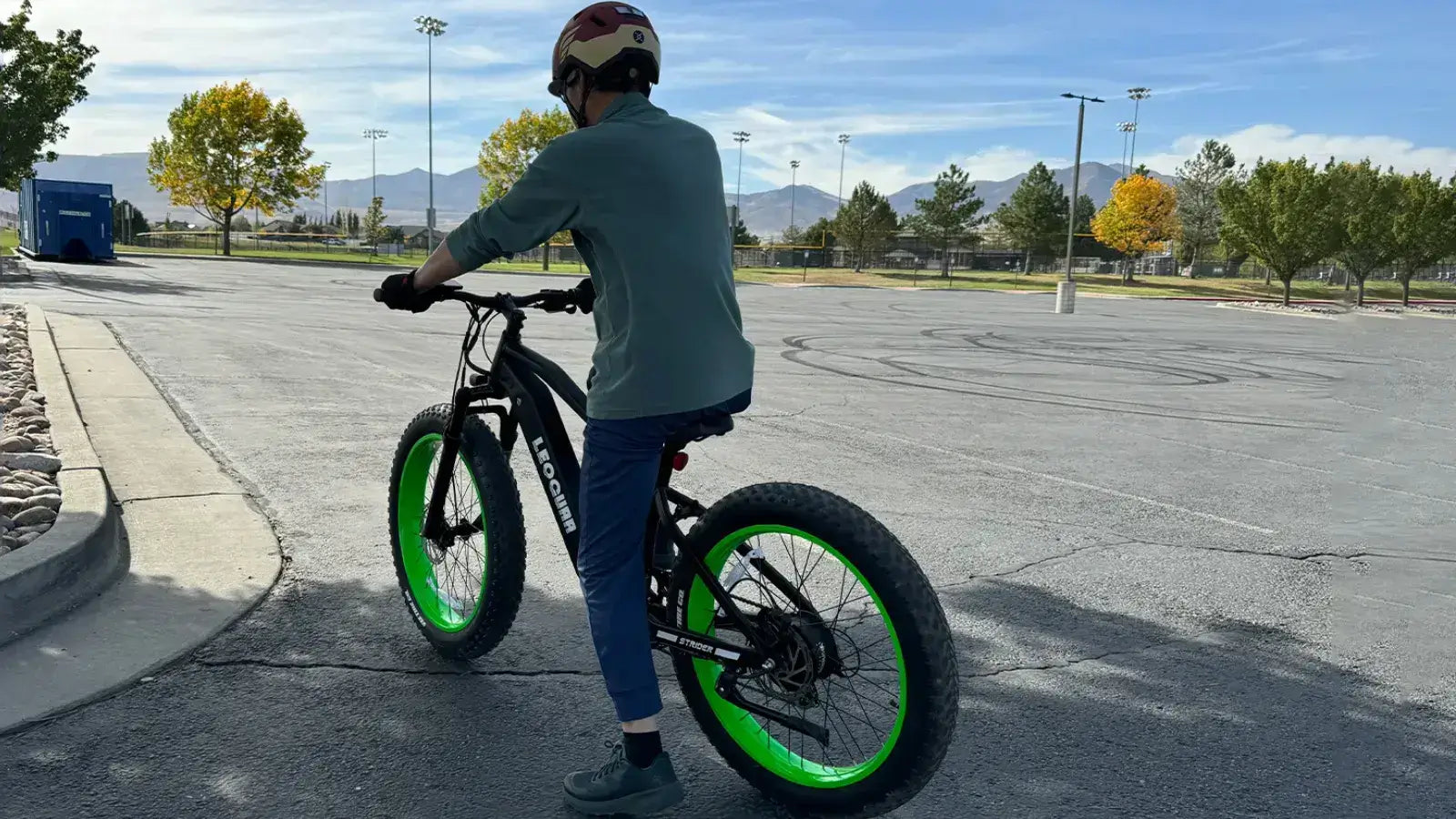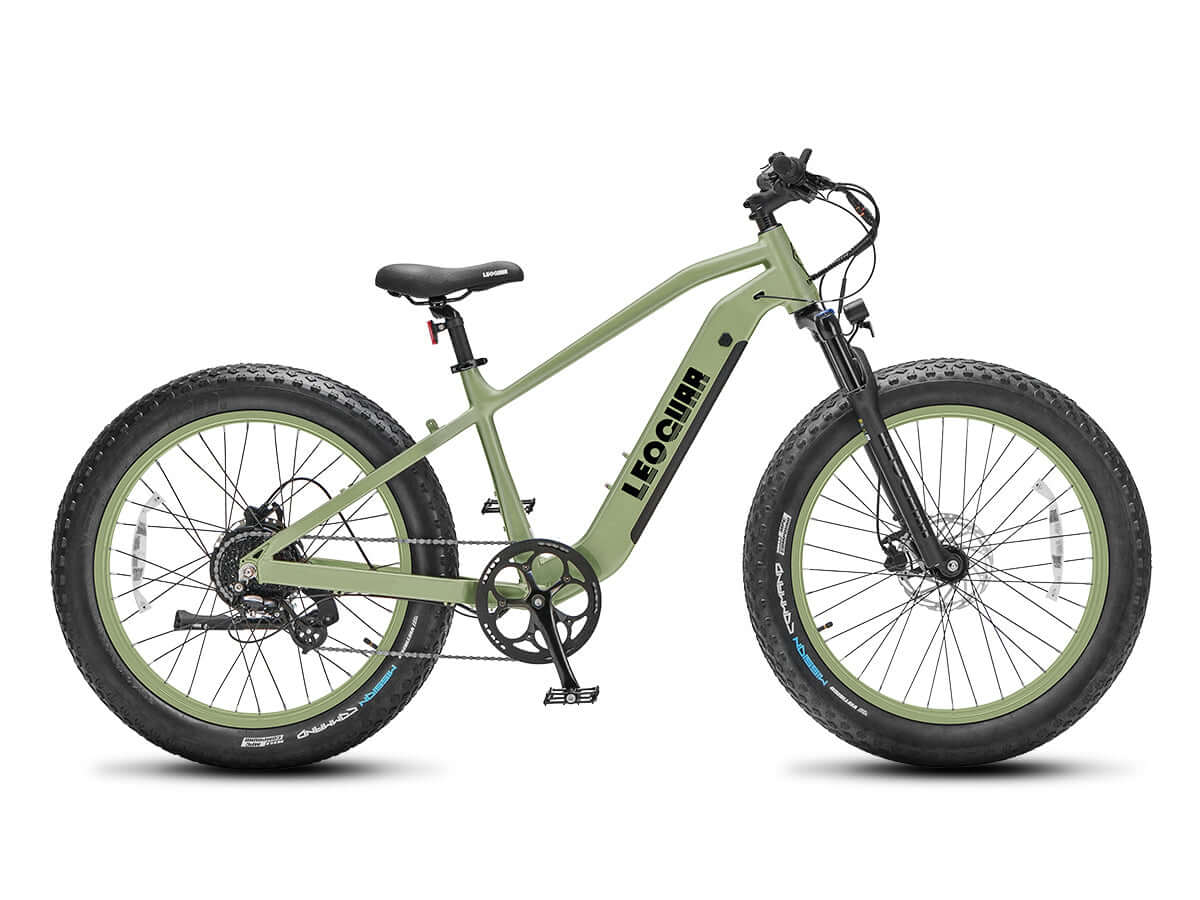
Electric Pedal Bike vs Electric Assist: Key Differences
Your Core Question Answered
Let's answer the main question right away: are an electric pedal bike and an electric assist bike the same thing? In most cases, the answer is yes. These terms mean the same thing when people talk about bikes or look at product listings. They describe a bicycle where the electric motor helps you only when you are pedaling.
But there's an important detail that can change your whole riding experience. Electric assist bike is a big category that includes many types of bikes. Electric pedal bike refers to one specific type within that category. Knowing this difference is the first step to becoming a smart buyer.
This article will clear up the confusing terms and explain the technology that makes each e-bike feel different when you ride it. By the end of this guide, you will understand the technical words, know how the technology works, and know exactly what to look for in the perfect e-bike for your needs. While people often use these terms to mean the same thing, the technology behind them is what really matters.
Defining The Core Terms
Let's build a solid foundation by clearing up the main confusion with simple, clear definitions for the terms you'll see. Think of this as your e-bike vocabulary starter pack.
What is Electric Assist?
An electric assist bike is the broadest term. It means any bicycle that has a built-in electric motor to help the rider. The motor can help you in two very different ways, and it's important to understand both:
Pedal-Assist (or Pedelec): This system adds motor power as you pedal. The bike senses when you're pedaling and gives you a boost to match. You still have to pedal, but the motor makes it much easier, like having a constant wind pushing you forward.

Throttle: This system lets you use the motor without pedaling at all, usually with a twist-grip on the handlebar or a button you push with your thumb. A bike with a throttle can work like a small scooter, moving you forward without any pedaling needed.
What is a Pedal Bike?
An electric pedal bike is more specific. It describes a type of electric assist bike that works only or mainly with a pedal-assist system (PAS). This is what most people picture when they think of a modern e-bike.
It keeps the classic cycling experience - the feeling of pushing the pedals and moving the bike forward with your own power - but makes it better with helpful, built-in assistance. The key point is this: every electric pedal bike is an electric assist bike, but not every electric assist bike is strictly pedal-only. Many e-bikes offer both pedal-assist and a throttle, giving you the best of both options.
How Pedal Assist Works
Let's look beyond simple definitions at the technology that makes an electric pedal bike feel the way it does. Understanding these parts helps you read a spec sheet and know what it means for your ride.
A pedal-assist system has three key parts working together. Think of it this way: the sensor is the brain, the motor is the muscle, and the battery is the heart.
The Three Key Components
The Motor: This delivers the power. Motors are rated in watts, and rules vary by location. For example, e-bike motors in the EU and UK are usually limited to 250 watts of continuous power, while US rules often allow up to 750 watts.
There are two main types based on where they're placed:
Mid-Drive Motors: Located at the crankset (where the pedals attach). These motors apply power directly to the bike's chain and gears. They provide a very natural, balanced ride feel and work efficiently on hills because they can use the bike's gears.
They are usually found on expensive models. Hub Motors: Located in the hub of the front or rear wheel. These motors push or pull the wheel directly.
Rear hub motors are very common and give you a pushing feeling. They cost less money and work great for commuting and riding on flatter ground.
The Battery: This is the fuel tank. Its capacity is measured in watt-hours (Wh) and determines how far you can travel on one charge. A larger Wh number means you can potentially go farther, though things like hills, rider weight, and assistance level heavily affect the actual distance.
The Sensors: This is the most important and often overlooked part that defines how the ride feels. The sensors are the brain of the operation; they tell the motor when to start and how much power to give. There are two main types of sensors that create very different riding experiences: cadence and torque.
As you'll learn from this comprehensive electric bike guide, the sensor type is probably the most important factor in ride quality.
Cadence vs. Torque Sensors
This is where we get to the heart of what separates a good electric pedal bike from a great one. The choice between a cadence sensor and a torque sensor directly affects how the bike responds to you.
It's the difference between the bike feeling like a separate machine giving you a push versus feeling like a natural extension of your own body.
Cadence Sensors: The Switch
A cadence sensor is the simpler of the two technologies. It works like a basic on/off switch.
How it works: It measures whether or not you are turning the pedals. As soon as the sensor detects that the cranks are rotating, it tells the motor to deliver a preset level of power based on your chosen assistance setting (like Level 1, 2, or 3).
It does not measure how hard you are pedaling, only that you are pedaling. What it feels like: The power delivery can feel sudden. You start pedaling, and after a slight delay, you feel a clear kick or surge as the motor starts.
It can feel less like your own effort is being boosted and more like an outside force is pushing you along. When you stop pedaling, the power cuts out just as suddenly. Pros: Systems with cadence sensors are less complex and cost less money.
They work great for riders who want consistent, easy power for relaxed riding or for those who may have physical problems and want maximum help with minimum effort. Cons: The ride can feel jerky and unnatural. It's less responsive in situations that need careful power control, like tight turns or crowded paths.
It can also waste battery power, as the motor often delivers full power for that level, even if you are pedaling lightly.
Torque Sensors: The Amplifier
A torque sensor is more advanced and intuitive technology that truly combines your effort with the motor's help. How it works: It measures your pedaling force - how hard you are pushing on the pedals.
It calculates your effort in real-time and tells the motor to deliver a matching amount of assistance. If you pedal lightly, the motor gives you a gentle push. If you stand up and pedal hard to climb a hill, the motor responds instantly with more power.
What it feels like: This is the bionic legs experience. The assistance is incredibly smooth, seamless, and natural. The bike feels like it is boosting your every input, making you feel stronger and faster.
There is no surge or delay; the power is there exactly when you ask for it and disappears just as smoothly. Pros: It provides a highly intuitive and controlled ride, making it better for technical riding, climbing steep hills, and handling varied terrain. It encourages a more active riding style, giving you a better workout.
It is also much more efficient with the battery, as it only delivers the power you actually need. Cons: The complexity of the technology means bikes with torque sensors usually cost more money.
Comparison: Cadence vs. Torque
| Feature | Cadence Sensor | Torque Sensor |
|---|---|---|
| Riding Feel | On/off surge of power | Smooth, intuitive, amplifies your effort |
| Best For | Casual cruising, flat terrain, riders wanting max assist with minimum effort | Hilly terrain, fitness, mountain biking, riders wanting a natural feel |
| Battery Efficiency | Less efficient | More efficient |
| Cost | Lower | Higher |
Decoding E-Bike Classes
Now that you understand the technology, it's important to understand the law. In many parts of the world, especially the United States, electric assist bikes are put into a class system to control where and how they can be ridden. Understanding these classes is essential for choosing a bike that you can legally and safely use on your local roads, bike paths, and trails.
This three-class system has been adopted by most U.S. states, creating more uniform rules for e-bikes.
The 3 E-Bike Classes
This system mainly separates bikes based on whether they have a throttle and their maximum assisted speed. Class 1: This is the classic electric pedal bike.
The motor provides assistance only when you are pedaling, and it stops helping when the bike reaches 20 mph. These bikes do not have a throttle. Because they most closely match a traditional bicycle experience, Class 1 e-bikes are the most widely accepted and are often allowed on multi-use paths and bike lanes where other e-bikes may not be.
Class 2: This class of e-bike has a throttle. The throttle can move the bike up to 20 mph without any pedaling. Most Class 2 e-bikes also have a pedal-assist system that also cuts off at 20 mph.
These are great for riders who want the option to cruise without pedaling or need a quick burst of power to get started from a stop. Class 3: These are the fastest pedal-assist bikes. Like Class 1, they are pedal-assist only (no throttle).
However, the motor continues to provide assistance until the bike reaches 28 mph. Often called speed pedelecs, these bikes are perfect for commuters looking to keep up with city traffic. Due to their higher speed, Class 3 e-bikes often have more restrictions and may be banned from certain bike paths or trails.
It is important to check the specific e-bike laws and policies across different states and your local areas before you buy. A sticker on the bike's frame will usually show its class, helping you quickly identify what you are buying and where you can ride it.
Frequently Asked Questions
Q: Can I ride an electric pedal bike without pedaling?
A: No, a true electric pedal bike only provides motor assistance when you are actively pedaling. If you want to ride without pedaling, you would need a Class 2 e-bike with a throttle feature.
Q: How far can I ride on a single battery charge?
A: The range depends on many factors including battery capacity (measured in watt-hours), your weight, terrain, weather, and how much assistance you use. Most e-bikes can travel 20-60 miles on a single charge under normal conditions.
Q: Are torque sensors always better than cadence sensors?
A: Not necessarily. Torque sensors provide a more natural riding experience and better battery efficiency, but cadence sensors work well for casual riders who want consistent, easy assistance and don't mind a less natural feel.
Q: Do I need a license to ride an electric pedal bike?
A: In most places, you don't need a license for Class 1 e-bikes since they are treated like regular bicycles. However, some areas may have different rules for Class 2 and Class 3 e-bikes, so check your local laws.
Q: What's the difference between mid-drive and hub motors?
A: Mid-drive motors are located at the pedals and work through the bike's gears, providing better hill climbing and a more natural feel but costing more. Hub motors are in the wheel and provide direct power, costing less but offering less efficiency on hills.









































Leave a comment